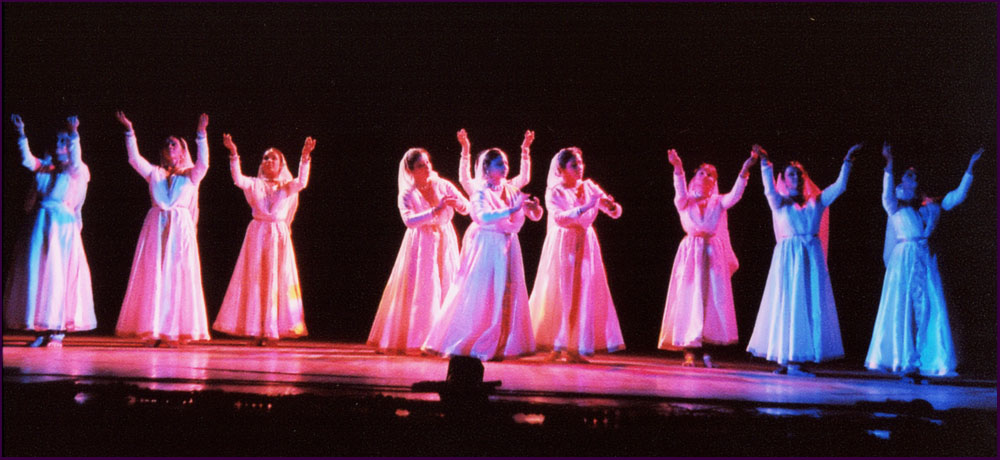

Sunday, 7th
October 2012

Kathak - Rani
Karnaa Nayak's group (kolkata)
| |
The
scintillating Indian classical dance Kathak originated in the ancient
temples of north India before finding its way into the royal courts
of Awadh and Jaipur. With the onset of the Mughal period, it became
a court dance for royal entertainment: so we have, on the one hand,
devotional temple Kathak and, on the other, the dazzling court Kathak
with its exotic costumes and Persian influence. As a story-telling
form, Kathak is born of the narrative tradition of the village minstrel
– the story-teller, who is also called kathak, or kathakar.
The kathakar sang of heroic tales and legends, dramatising lyrics
with subtle gestures and expressions. This graceful, spontaneous
dance form reveals the poetry, mythology and spiritual ethos of
its roots, and most importantly, India’s rich Hindu-Muslim
heritage. Born in Sindh,
Pakistan, Kathak exponent Smt. Rani Karnaa’s repertoire
integrates the traditions of Jaipur and Lucknow gharanas with
a sense of artistic adventure. She trained under Kathak greats
Guru Nrityacharya Narayan Prasad, Pt. Sunder Prasad and Pt. Birju
Maharaj, besides learning Odissi under Guru Kelucharan Mohapatra.
Her collaborations with musicians, scholars, scientists and writers
have created rare compositions based on poetry, lyricism, music,
philosophy, pure dance and abhinaya. Her early experiments with
the songs of Tagore and her interpretations of Surdas and Haridas
accounts for a fascinating life as a composer-dancer. Rani Karnaa
has performed at many prestigious Indian festivals and travelled
widely in Asia, Russia and Europe. Recipient of several honours,
she founded and headed in the late seventies the Calcutta School
of Music. She is currently director of her own dance academy,
Samskritiki Shreyaskar in Kolkata. |
| |
Presentation Piroye Moti begins with an invocation
to Lord Shiva, and is followed by an exposition of pure dance. Raas
Sanyog Shringar explores the wondrous love and beauty of the eternal
pair Radha and Krishna with a verse of Swami Haridas providing the
text. Hindol Tarana, a traditional, pure dance composition comes
next after which the artistes perform the Shumar, a play of numbers
which is an important aspect of Kathak. The mood changes with Varsha
Agaman, a visual and verbal treat depicting the joy rains bring.
The evening closes with Trivatt, a pure dance presentation replete
with the scintillating aspects of Kathak, such as fast footwork,
sharp linear movements and precise pirouettes. |













